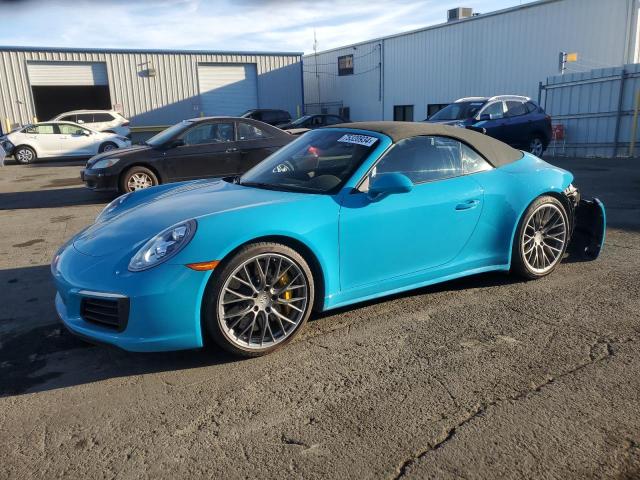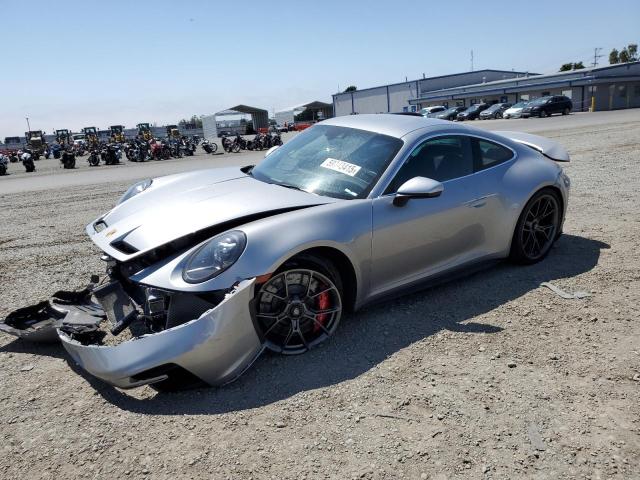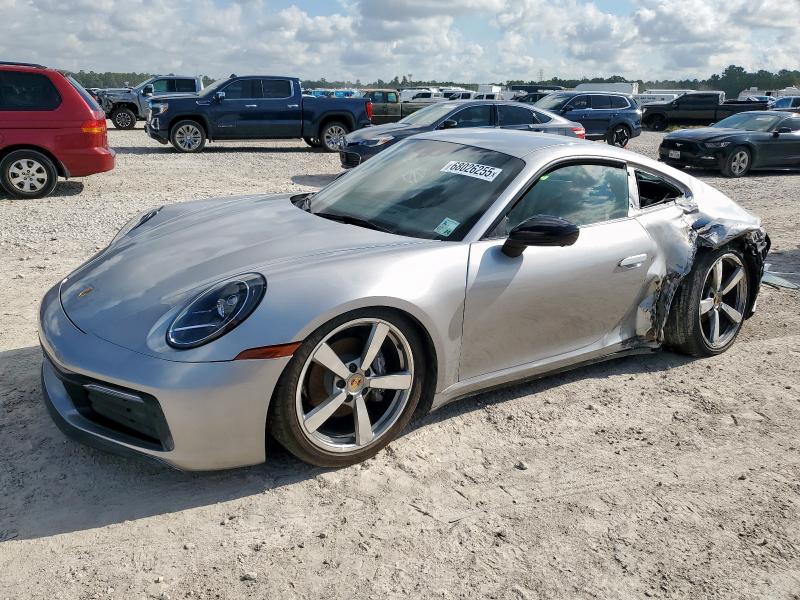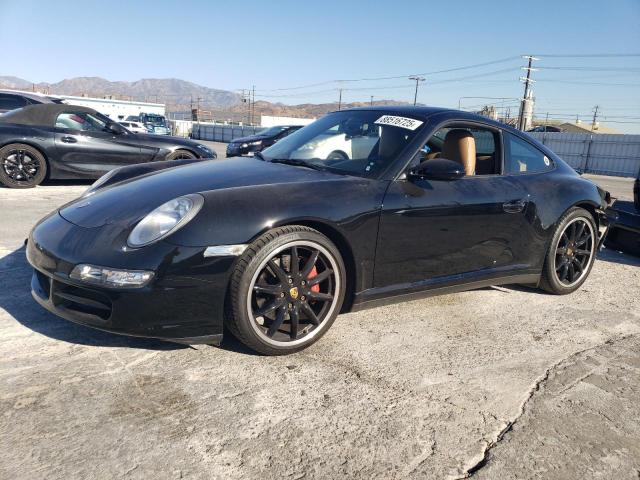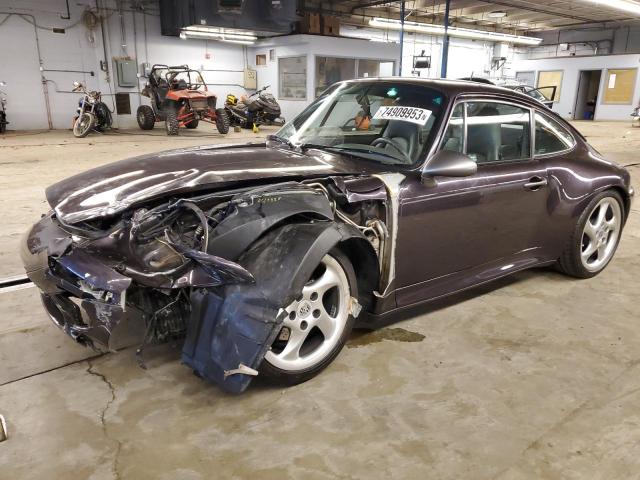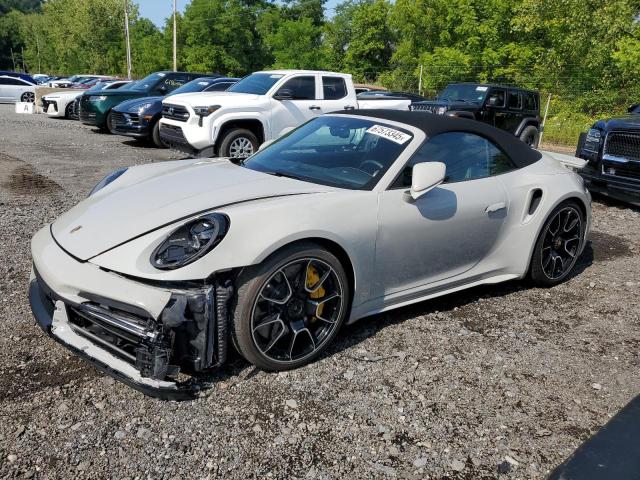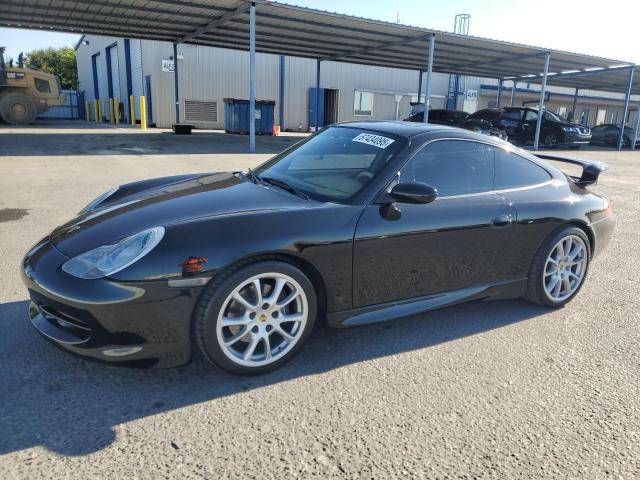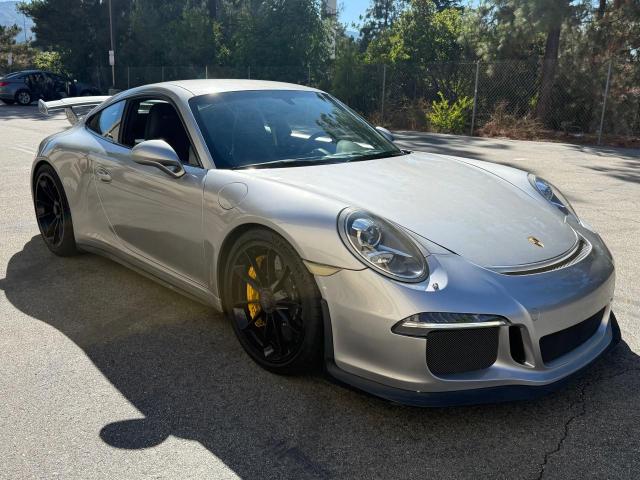1997 PORSCHE 911 | WP0AA2998VS322699
Lot details
- Sale Date2025-05-14
- Lot Number41892833
- ACV100000 $
- Sale documentNon-Repairable (California)
- LocationSanta Clarita (CA)
- Odometer117,174 miles (188,573 km)
- Primary DamageLEFT SIDE
- Secondary DamageFRESH WATER
- SellerState Farm Group Insurance
Vehicle specifications
9
~$190,000
Engine: 3.6L flat-6 turbo
Torque: 585 Nm
0–100 km/h: ~3.9 s
The 993-generation GT2 is perhaps the most fearsome 911 ever built. Conceived as a homologation special for FIA GT racing, it stripped the already powerful Turbo model of its all-wheel-drive system, shed excess weight, and added a massive fixed rear wing along with exaggerated fender flares and aerodynamic components. At its heart was the 3.6-liter flat-six engine from the 911 Turbo, but re-tuned and turbocharged to deliver up to 450 horsepower to the rear wheels only. With no electronic driver aids, limited traction, and savage turbo lag, it demanded absolute focus and mechanical sympathy. Acceleration was explosive and unpredictable, and the car’s performance envelope was shaped entirely by driver input.
Underneath its wide body and bolt-on arches lay a race-prepped chassis. The suspension was stiffened and track-biased, with double-adjustable dampers, reinforced geometry, and lightweight magnesium wheels. Braking was handled by Porsche's race-spec units with immense stopping power and fade resistance. Steering feel was unfiltered and telegraphic, a result of the car’s pure mechanical setup and analog design. The GT2 wasn’t just a fast 911 — it was a weapon of precision, designed to dominate racetracks and intimidate public roads in equal measure.
What makes the 993 GT2 legendary is not just its rarity or speed, but its rawness. It was the last 911 built without electronic intervention and the final turbocharged 911 to be air-cooled. It marked the end of one era and the violent beginning of another. It was unapologetically wild, brutally fast, and required complete commitment to tame. For those who mastered it, the GT2 offered an unparalleled connection between driver, machine, and asphalt — and a thrill few cars since have managed to replicate.
Final Bid Porsche 911 (1997)
$46,000
$56,000
$72,500
Body Styles
Coupe (Carrera, Carrera 4, Carrera S, Carrera 4S, Turbo, Turbo S) – the quintessential 911 shape, refined for the 993 generation with sleeker bumpers, integrated headlights, and a stronger, more rigid body structure. The wide-body Carrera 4S and Turbo models featured a much broader stance, accentuated by wide rear fenders and lowered suspension setups that improved handling and gave the car a more planted appearance.
Cabriolet (Carrera, Carrera 4) – an elegant open-top version maintaining the 911’s unmistakable silhouette, equipped with a fully automatic soft top and a reinforced chassis for improved rigidity. The Cabriolet was praised for offering nearly the same driving dynamics as the coupe while providing the sensory experience of open-air motoring.
Model Name Meaning (Manufacturer)
The "911" name stems from Porsche’s internal model number sequence, originally intended to be "901" before Peugeot's naming rights prompted the change. "Carrera" refers to the Carrera Panamericana race, symbolizing performance and endurance. "S" designates a sportier, more powerful version, "4" indicates all-wheel drive, and "Turbo" signifies forced induction for extreme performance within the lineup.
Model Name Meaning (Languages)
Globally, "911" is synonymous with Porsche and high-performance sports cars. The model designation transcends language barriers and has become an international icon of prestige, engineering excellence, and driving purity. The "Carrera" and "Turbo" subdesignations are equally respected across markets, maintaining strong brand recognition and aspirational value.
Body & Interior Colors and Rims
The Porsche 993 generation offered a selection of timeless and sophisticated colors that perfectly complemented its sculpted silhouette. Classic shades included Arctic Silver Metallic, Guards Red, Black, and Polar Silver Metallic, each enhancing the curves and aggressive stance of the car under varying lighting conditions. More exclusive hues like Arena Red Metallic, Riviera Blue, and Speed Yellow were available for buyers seeking a more standout, motorsport-inspired look. Special-order and Paint-to-Sample options allowed for even deeper personalization, making many 993s unique to their first owners.
Inside, the 993’s cabin combined traditional Porsche minimalism with upgraded materials and improved ergonomics compared to previous generations. Standard interiors featured high-quality leather in Black, Cashmere Beige, and Midnight Blue, while special trims introduced two-tone color schemes and natural wood or carbon fiber accents. The dashboard layout emphasized clean functionality, with the iconic five-gauge cluster tilted toward the driver and supportive sport seats available as an option for more aggressive driving use. Turbo and Turbo S models introduced even higher-grade leather, embossed Porsche crests, and thicker steering wheels to accentuate their more exclusive character.
The 993 generation offered a variety of wheel designs, each emphasizing performance and classic styling. Standard Carreras wore simple but elegant 16-inch five-spoke alloys, while optional 17-inch Cup wheels provided a more aggressive stance. Carrera S, 4S, and Turbo models featured the famous wide-body look paired with Turbo Twist-style alloys, offering greater width for improved grip and enhanced road presence. Lightweight hollow-spoke wheels were optionally available for Turbo S models, further optimizing performance by reducing unsprung weight.
Top Expensive Options
- Motor Sound Package (Enhanced Intake and Exhaust Tuning): ~$2,000
- Full Leather Interior Package (Dash, Doors, Console): ~$4,000
- Hardback Sport Seats with Power Adjustment: ~$3,500
- Limited-Slip Differential with Automatic Brake Differential: ~$1,500
- 17-inch Cup II Lightweight Alloy Wheels Upgrade: ~$2,800
- Aero Kit Package (Front Lip Spoiler + Fixed Rear Wing): ~$5,000
- Sunroof Delete Option (Weight Saving for Track Use): ~$1,000
- Carbon Fiber Interior Trim Package: ~$3,200
- Heated Front Seats: ~$700
- Premium Sound System with CD Changer: ~$1,400
vs Competitors
The Porsche 911 (993) faced competition from the likes of the Ferrari F355, Chevrolet Corvette C4 ZR-1, and Nissan Skyline GT-R (R33). While Ferrari offered a more exotic appeal and the Corvette prioritized raw horsepower per dollar, the 993 stood apart with its unique air-cooled engine character, precision engineering, and everyday usability. It was one of the very few supercars of the era that could deliver thrilling performance on a racetrack while remaining comfortable and practical for daily commuting. Today, the 993 generation is widely regarded as the ultimate classic-era 911, combining analog driving purity with just enough modern refinement.
Fun Fact
The 993 was the last air-cooled Porsche 911, marking the end of an era that many purists still revere. It was also the first 911 to feature a multi-link rear suspension (Porsche’s “LSA” setup), dramatically improving ride comfort and handling stability compared to the earlier 964 generation. Due to its blend of classic feel, mechanical robustness, and timeless design, the 993 remains one of the most collectible and beloved generations of the 911 lineage.


